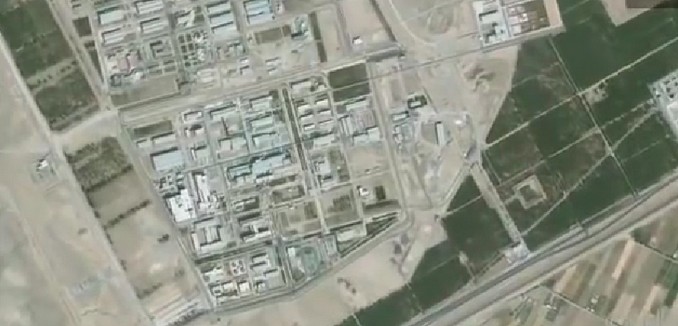In a departure from the usual procedure, Iran will be allowed to use its own “experts and equipment” to provide international inspectors with environmental samples from the military base and suspected nuclear site Parchin, the Associated Press (AP) reported today, citing a classified draft of a side agreement between Iran and the International Atomic Energy Agency (IAEA) that its reporters had seen.
Any IAEA member country must give the agency some insight into its nuclear program. Some countries are required to do no more than give a yearly accounting of the nuclear material they possess. But nations— like Iran — suspected of possible proliferation are under greater scrutiny that can include stringent inspections.
But the agreement diverges from normal inspection procedures between the IAEA and a member country by essentially ceding the agency’s investigative authority to Iran. It allows Tehran to employ its own experts and equipment in the search for evidence for activities that it has consistently denied — trying to develop nuclear weapons.
Iran has consistently refused to allow a significant investigation of Parchin, despite repeated requests by the international community to disclose the full extent of its past nuclear work, including any possible military dimensions (PMD). Omri Ceren, The Israel Project’s managing director for press and strategy, explained last year why knowing the full extent of Iran’s nuclear research is essential for making the deal “verifiable.”
At stake are international concerns over the so-called possible military dimensions (PMDs) of the Iranian nuclear program, the central significance of which has sometimes been underplayed by voices within the foreign policy community. While the P5+1 is charged with negotiating over Iran’s uranium work, its plutonium work, and its ballistic missile work – all of which the Iranians are obligated by half a dozen United Nations Security Council (UNSC) resolutions to roll back – the IAEA seeks to establish the scope of Iran’s overall atomic program, including in those three more specific areas.
The mandate stretches beyond full-blown weaponization work, and into military involvement in uranium mining, centrifuge construction, and so on. Full Iranian disclosure is considered a minimum to establishing a robust verification regime: The IAEA can’t verify that Iran has met its obligations to limit uranium work, for instance, unless it knows the full scope of the uranium work that’s being done. PMD-related transparency is seen as not just another issue – say, one that Iran could refuse to trade away by making concessions in other areas – but as a prerequisite to verifying Iranian compliance across all issues.
The Israel Project publishes The Tower.
Late last month, The Wall Street Journal reported that Iran would not need to reveal the full extent of its past nuclear research in order to receive sanctions relief. A former CIA analyst, Fred Fleitz, responded to the news that Iran would be allowed to provide International Atomic Energy Agency (IAEA) inspectors with environmental samples from suspected nuclear sites by calling the agreement a “dangerous farce,” and arguing that, without “unfettered” access for inspectors, Iran would be able to clean up suspected nuclear sites.
Earlier this month, satellite imagery showed that Iran was further sanitizing Parchin. After these charges were dismissed by Iran’s Foreign Minister Mohammad Javad Zarif, David Albright, a former weapons inspector and head of the Institute for Science and International Security, wrote that the P5+1 powers’ failure to insist that Iran account for its past nuclear work will “make a mockery of the nuclear deal.”
[Photo: Sherlock72 / YouTube ]




